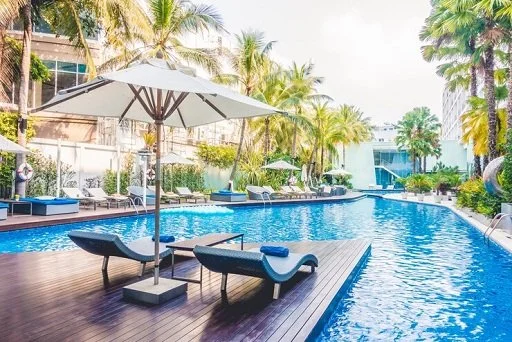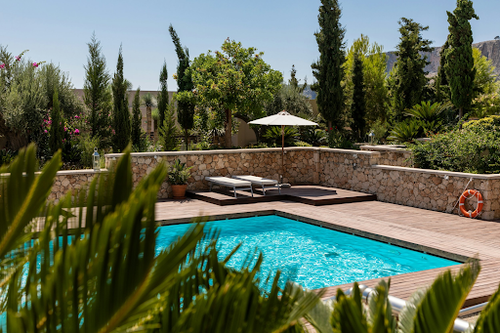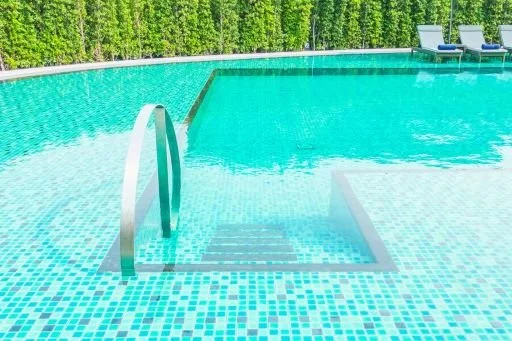Innovative Ideas for Competitive Swimming Pool Designs
Designing pools for competitive swimming involves implementing innovative ideas to improve athlete performance and experience. These designs prioritize optimal dimensions, clear lane markings, and advanced features like adjustable starting blocks and high-quality underwater lighting. Every detail of competitive swimming pool designs is carefully planned to make sure that swimmers succeed in their competitions.
Advancements in Pool Design for Competitive Swimmers
Competitive swimming pool designs are engineered with precision to ensure fair competition and optimal performance. These pools have specific dimensions, depths, and configurations set by governing bodies. Whether for local meets or international championships, each detail is important. Key elements of competitive swimming pool designs are:
1. Pool Dimensions: Standard competitive pools measure 50 meters in length, with lanes typically 2.5 meters wide. Additional configurations include short-course pools (25 meters) and practice pools customized for training.
2. Lane Markings and Depth: Clear lane markings and consistent depth (usually 1.35 to 1.80 meters) make sure uniformity and safety during races.
3. Starting Blocks: Starting blocks are positioned at the pool's edge, designed for powerful and efficient starts. They are adjustable to accommodate swimmers of different heights and preferences.
4. Water Quality and Temperature: Maintaining exact water quality and temperature is important for swimmers' comfort and performance regularity.
5. Deck Space: Sufficient deck space around the pool allows for warm-up, cool-down, and safe movement of athletes and officials during competitions.
6. Wave Reduction: Advanced pool designs include wave-reducing technologies to minimize water problems and improve swimmers' speed and performance.
7. Underwater Lighting: High-quality underwater lighting systems improve visibility for officials and observers, especially during evening events.
8. Accessibility Feature: Modern designs prioritize accessibility with ramps, lifts, and seating arrangements for various participants and observers.
Understanding the Financial Commitment of a Fiberglass Inground Pool
Investing in a fiberglass inground pool is about more than just improving your property. Fiberglass pools offer numerous advantages, such as durability, low maintenance, and quick installation. However, understanding the financial implications is important before making a decision.
The Initial Cost: The cost of a fiberglass inground pool can vary significantly based on size, shape, and additional features like lighting and heating systems. While the initial cost may seem high, it's important to consider the long-term benefits and savings in maintenance and repairs compared to other types of pools.
Installation Expenses: One advantage of fiberglass pools is their relatively quick installation compared to brick pools. However, this convenience comes with costs. Working with experienced professionals like Louisiana Land Art ensures the installation is done efficiently and according to local building codes.
Maintenance and Operating Costs: Fiberglass pools are known for their low maintenance requirements. Unlike brick pools, which may require resurfacing over time, fiberglass pools have a smooth, scratched surface that resists algae growth and reduces the need for chemicals. This translates to lower maintenance costs and less time spent on cleaning.
Long-Term Durability: Durability is a significant factor in the financial commitment of a fiberglass pool. Compared to stones, fiberglass pools are less prone to staining, cracking, and punctures, which can save money on repairs over the years. Additionally, the smooth surface of fiberglass reduces the risk of skin scratches and provides a comfortable swimming experience.
Energy Efficiency: Another financial consideration is the energy efficiency of fiberglass pools. Particularly in colder climates or throughout the winter months, they reduce heating costs since they retain heat more efficiently than stone. Investing in energy-efficient tools like pumps and heaters further improves these savings over time.
Selecting the Right Size and Features: To optimize your financial commitment, it's important to select a fiberglass pool size and features that align with your budget and lifestyle. Consider factors like ongoing maintenance costs, utility expenses, and long-term durability when selecting additional features such as lighting, automation systems, and water features.
Conclusion
At Louisiana Land Art, we are aware of the cost impact of fiberglass inground pools and competitive swimming pool designs. Improve athlete performance with precisely engineered pools while considering long-term savings and durability. Contact us to learn about innovative features and careful planning for competitive success and cost-effectiveness in pool installations.


